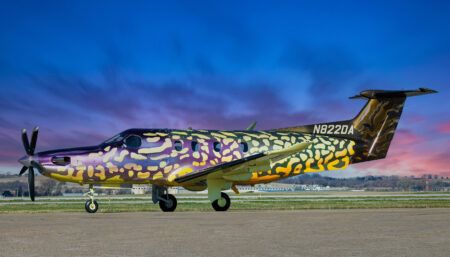Kurt Weidemeyer, vice president of business aviation at Inmarsat, discusses progress on the company’s new Ka-band internet service
What’s the latest on Jet ConneX, your new Ka-band internet service?
We have a lot of STC programs underway. Honeywell has a Falcon 900 and a Boeing 757 flying with it. Bombardier has installed it on several aircraft, and achieved the STC for the Global 5000 and 6000 programs in April 2016. We’re going to announce another OEM in the next couple of months. Around 40 aircraft will be equipped to provide the service in the next 12 months. Hopefully, within a year, there will be an STC for every major platform.
What does the service enable?
Up until now, the most popular connectivity system for business aviation has been our own SwiftBroadband system, which delivers around 500Kbps and enables you to email and browse the internet. CEOs are still happy with its reliability, but they want more speed.
Jet ConneX provides up to 50Mbps, depending on the antenna you install – a hundred-fold improvement. The system is capable of providing multiple streams of Netflix, ESPN or similar content at the same time. Beyond that, I guarantee there are going to be so many applications that we haven’t thought of yet.
What were the biggest challenges in launching this service?
It’s rocket science! The biggest hurdles are building and launching the satellites. But once you get the satellite up, into orbit and functioning, you know you have the network you need. In August 2015, we successfully launched the third satellite, which gave us global coverage.
In the first year, you iron out the wrinkles, making sure that everything works very well. This is why we haven’t announced the official service introduction yet, even though we have aircraft flying on the network now. You could call it a soft launch. Bombardier is going to start delivering aircraft equipped with Jet ConneX before the end of the second quarter of 2016, so we’re going to have actual customers on the network, but we still aren’t going to announce service introduction until we’ve got more.
How did you test the system?
We started flight testing well over a year ago with the Honeywell Boeing 757 platform, the Falcon 900, and now the Bombardier Global 5000/6000. We fly all these platforms all around the globe, just to make sure.
First you test within one spot beam. You fly around a lot to make sure that you’re not dropping the link, and that you’re getting the speeds you expect to see within that beam.
Once you feel pretty solid about that, you start flying between two beams. Our system has to hand off from one beam to the next seamlessly so that the user experience doesn’t change. We have two modems on the aircraft. One is connected to one spot beam, and as you get toward the edge of that spot’s range, the second modem connects to the new spot.
Once you master that you have to start flying between satellites. The antenna has to physically move, to point to the next satellite. Once you establish you are dropping one and picking up the other correctly, then you start working on how quickly this happens – it should be under a minute.
Then you just fly everywhere to make sure you are providing the customer experience expected.
How do your partnerships work?
Inmarsat has no contracts with end customers in the business aviation market; all of our business is done through our distribution partners. These are Satcom Direct, ARINCDirect (owned by Rockwell Collins), Satcom1 (owned by Honeywell), Gogo Biz and Sitaonair. They provide the service to the end customer and support them directly. They also add value with applications including Voice over IP, IPTV and a lot of other stuff that Inmarsat does not do. It’s a good partnership.
Why did Inmarsat decide not to do that itself?
In business aviation, there’s a lot you have to do to make your customer happy. It’s not just about making sure that their connectivity works really well. All of our partners also provide flight planning services, weather services and other things. A lot of customers, even if they have six or seven aircraft, they still don’t always have the resources for a huge flight department. So they go to our partners and get those services along with cabin connectivity. Our core strength is in providing reliable connectivity.
Do you have plans to expand Jet ConneX?
We’ve got three satellites up now and we’re going to launch a fourth for more capacity by the end of 2016. But we know we’re going to need more capacity, so we’ve signed a contract for two more satellites, which will enter service within a couple of years. The key is to add capacity before we need it. Customers want to buy into a service that is going to be the same or better 10 years from now. We actually guarantee committed information rates.
What else are you developing?
We’re working on our next-generation network, a European satellite/air-to-ground network that will come online for business aviation around late 2017 or early 2018. The idea is to provide a similar system to that which Gogo operates in North America. We could deliver up to 75Mbps. It’s going to be ideal for aircraft that mostly travel within Europe and don’t need a global satellite solution like Jet ConneX.





